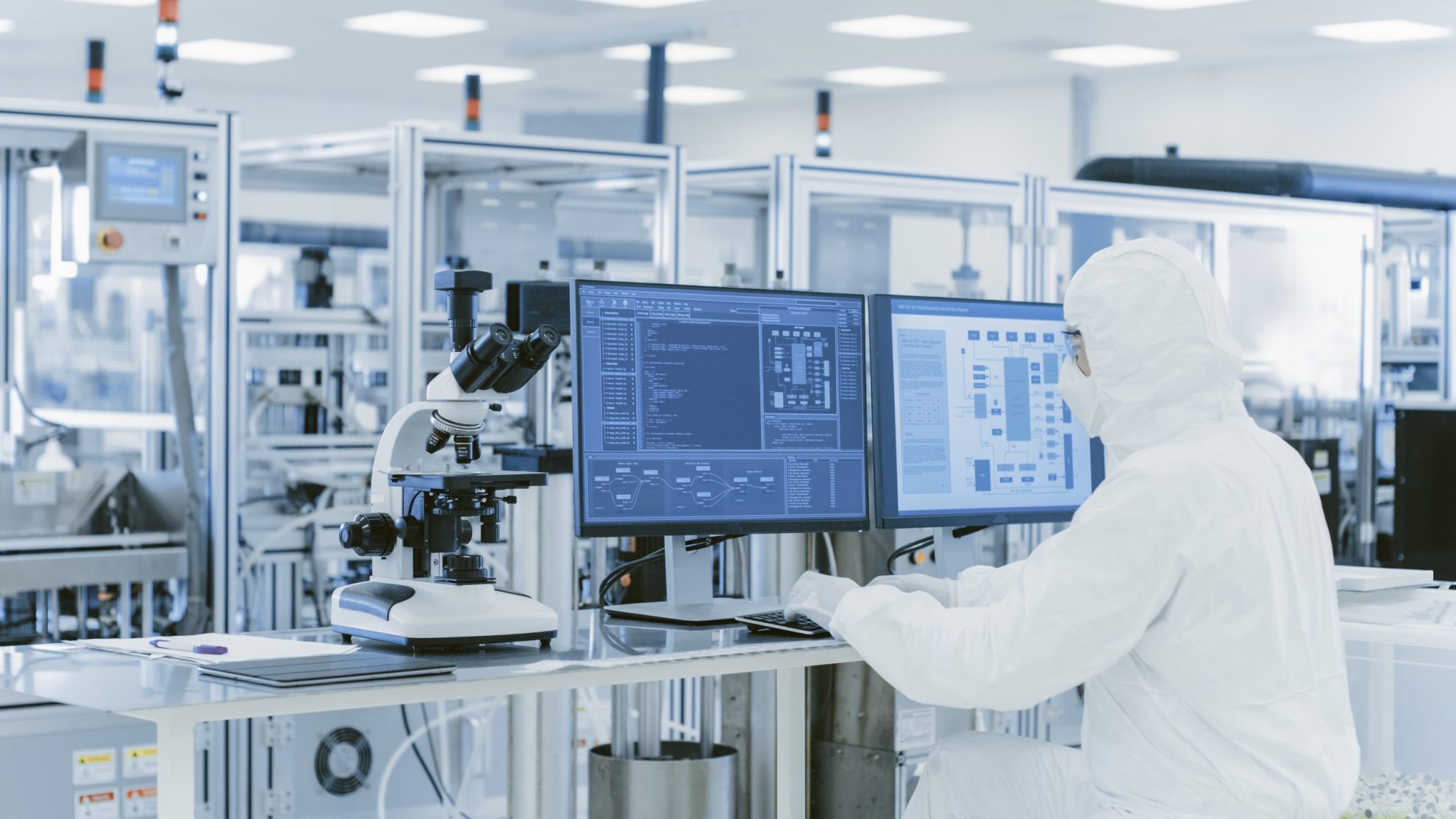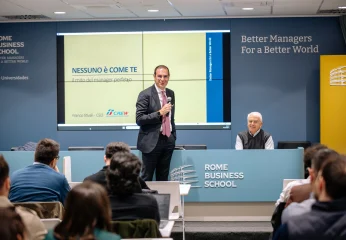The pharmaceutical expenditure, regional and international trend, counterfeit risk at the time of COVID-19 in the search for the Rome Business School Research Center

Rome, April 2020 – Rome Business Research Center published the research “The main challenges of the pharmaceutical sector in Italy and in the world”. The epidemiological emergency from COVID-19 is affecting, as well as the lives of all of us, all the main economic sectors and among these the scenario of the pharmaceutical sector will also change in terms of expenses, employment development, technological trends, risks and protection end user. The research highlighted data and trends relating to pharmaceutical expenditure, with a focus on counterfeiting drugs and on the impact of the current epidemiological emergency situation on the health economy in Italy and abroad, but also the many opportunities that pharmaceutical sector is opening up, from the point of view of employment opportunities and new professional figures.
THE NUMBERS OF THE ITALIAN PHARMACEUTICAL EXPENDITURE
Analyzing the composition of total Italian pharmaceutical expenditure region by region, we note that Lombardy has the highest expenditure (especially in the last period) with a total amount of 4,625 million Euros, followed by Lazio (2,865 million euros) and Campania (2,856 million euros). According to the trend recorded in the period January-October 2019, compared to the same months of the previous year and which refer to the agreed net pharmaceutical expenditure, the region that most increased the expenditure was Emilia-Romagna (+2,5%), while Abruzzo holds the primacy for the most marked percentage decrease (-7.3%).
Pharmaceutical expenditure (January-October 2019/2018)
| Region | ||||
| Net expenses Gen-Ott 18 (€) |
Net expenses Gen-Ott 19(€) |
Variation% | ||
| LOMBARDIA | 1.122.161.338 | 1.147.568.500 | +2,3% | |
| LAZIO | 698.644.829 | 700.288.011 | +0,2% | |
| CAMPANIA | 661.627.272 | 658.527.339 | -0,5% | |
| SICILIA | 523.944.612 | 530.067.826 | +1,2% | |
| PUGLIA | 473.510.903 | 469.326.680 | -0,9% | |
| PIEMONTE | 462.652.632 | 459.335.050 | -0,7% | |
| VENETO | 422.135.426 | 415.031.535 | -1,7% | |
| E. ROMAGNA | 388.650.521 | 398.338.714 | +2,5% | |
| TOSCANA | 368.995.172 | 362.297.715 | -1,8% | |
| CALABRIA | 236.272.020 | 237.666.503 | +0,6% | |
| SARDEGNA | 200.512.817 | 194.276.247 | -3,1% | |
| MARCHE | 179.736.275 | 176.727.256 | -1,7% | |
| LIGURIA | 162.459.008 | 160.548.363 | -1,2% | |
| ABRUZZO | 174.627.689 | 161.940.220 | -7,3% | |
| FRIULI V.G. | 135.303.950 | 133.645.804 | -1,2% | |
| UMBRIA | 103.049.723 | 102.940.885 | -0.1% | |
| BASILICATA | 63.885.514 | 64.542.223 | +1% | |
| P.A. TRENTO | 50.018.595 | 49.991.119 | -0,1% | |
| P.A. BOLZANO | 37.517.277 | 36.680.099 | -2,2% | |
| MOLISE | 33.509.552 | 33.677.194 | +0,5% | |
| VALLE D’AOSTA | 11.071.099 | 11.090.328 | +0,2% | |
| ITALIA | 6.510.286.226 | 6.504.507.611 | -0,1% | |
STRATEGIC SECTOR FOR THE NATIONAL ECONOMY WHERE ITALY IS THE FIRST EU PRODUCER
At a National and European level, Italy is positioned as the EU’s leading pharmaceutical manufacturer. In the country the total pharmaceutical expenditure per capita is 27% lower than the average of the big Europeans and considering also the private component, the Italian expenditure remains lower than that of the other countries (-12%) with drug prices lower by 15-20% compared to the European average;
The data that emerge from our research at European level, is that the Italian public per capita pharmaceutical expenditure is lower than that of Germany, and France. It is higher than Spain and the United Kingdom, but in the first case hospital expenditure, non-reimbursable drugs and self-medication are not included (in practice only purchases in pharmacies are included, which by comparison in Italy weigh less than 30% on expenditure total); in the second case, self-medication and VAT are not considered.
Total EU (big) population
Source: Eurostat dates
| Total pharmaceutical expense. Year 2017 (estimates on agreed expenditure and for direct purchases) | € |
| Germany | 527 |
| France | 447 |
| Spain | 348 |
| UK | 330 |
| Italy | 290 |
| Media EU bigs | 400 |
Total per capita public pharmaceutical expenditure. 2017 (estimates of agreed spending and for direct purchases)
Source: Farmindustria calculations on AIFA, IQVIA, Eurostat, EFPIA data
| Total BIG European population 2019 | Population / million inhabitants |
| Germany | 83.019.213 |
| France | 67.012.883 |
| UK | 66.647.112 |
| Italy | 60.359.546 |
| Spain | 46.937.060 |
HAS CREATED MORE EMPLOYMENT IN THE LAST 2 YEARS AND WILL OPEN 100 NEW PROFESSIONS
In the past two years, the pharmaceutical sector has been the one that has increased the most in employment. The numbers are set to rise as in the next 10 years, 100 new professions will be necessary with functions, among others, of medical liason and medical advice, personalization of therapies, experts in pharmacoeconomics, pharmacogenetics and pharmacogenomics. By 2021 drug companies will be able to hire around 3 thousand people and about half of the new entrants will face new and multidisciplinary tasks. In addition to classic skills, engineering, computer skills related to the technological-mathematical area of cybersecurity, blockchain and data analysis (the so-called STEM: Science, Technology, Engineering and Mathematics) will also be required. In contrast to other sectors in which digitalization replaces work, opportunities will open up for the pharma market, especially in the innovation, R&D, supply chain and marketing areas.
COUNTERFEITING: WORTH 200 BILLION DOLLARS A YEAR AND IT WILL GROW WITH COVID-19
The situation of social and health upheaval that we are experiencing has also highlighted the phenomenon of counterfeiting drugs, in full expansion everywhere, due on the one hand to the growth of e-commerce and on the other to the consequences of COVID-19. Indeed, a significant increase is expected in the illegal trade in counterfeit medicines and fraud / speculation linked to the huge worldwide demand for Personal Protective Equipment (PPE). Counterfeiting of healthcare products removes about $ 200 billion a year from the legal market, mainly affecting developing countries and causing about 160,000 victims per year. In Italy the incidence of counterfeit medicines is lower than in other EU countries (less than 0.1% of the total), thanks also to the traceability systems and measures in place to prevent and combat the spread of harmful drugs.
GLOBAL EXPENSE AT SHARE 1.5 TRILLION DOLLARS AND INVESTMENTS IN CLOUD COMPUTING AND AI
Globally, pharmaceutical spending is expected to increase by 2-5% per annum over the next four years to exceed $ 1.5 trillion in 2024. Also due to the scenario opened by the emergency from COVID-19, Italy will move from an average pharmaceutical expenditure of 34.4 billion dollars in the 2014-18 period – which recorded growth of 6.3% – at an expense of 40-44 billion in the 2020-2023 period.
In 2019, patients worldwide spent approximately $ 234 per person on pharmaceutical products. The landing on the market of new products will contribute to a higher average annual expenditure in absolute terms but compared to the costs incurred it will represent a lower value, due to a global decrease in prices. Almost two thirds of new products in the next five years will be characterized by “innovative specialties”, which will increase by 61% compared to the last five years, reaching a specific share of expenditure close to 50% by 2023 in most markets developed. The largest therapeutic area for per capita spending and new products will continue to be oncology. This trend will give way to greater technological investments, such as cloud computing, artificial intelligence and machine learning, considered among the most important tools to be explored to improve productivity. The “special expenses” for so-called “innovative” drugs are expected to represent 40% of global spending in 2024 and 52% in the more developed markets.
“The research reveals a situation of equal negative and positive consequences in relation to the current economic-health crisis brought by COVID 19, which on the one hand is leading to an increase in pharmaceutical expenditure, to counter the advance of the virus, especially in given the production of new drugs or the sudden commercialisation of those still in the testing phase, not excluding the conspicuous presence of counterfeit drugs both nationally and internationally.”
Comments Valerio Mancini, director of the Rome Business School Research Center
“On the other hand however, the crisis is opening the door to an unprecedented step forward in technology and the introduction of new multidisciplinary types of employment on the labor market, particularly linked to innovation and digitalization. In order to make a contribution in this direction, the Rome Business School is at the forefront of offering cutting-edge training on the issues of digitalization of work and the study of new tasks especially related to the e-health area, featuring all its Masters for the presence of modules dedicated to soft skills and innovative digital skills, in order to make our students understand the role of modern manager / entrepreneur, open to current and future challenges“.




